A student wishes to study the cell structure under a light microscope having 10X eyepiece and 45X objective . He should lilluminate the object by which one of the following colours of light so as to get the best possinle resolution?
Yellow
Green
Red
Bule
The correct Answer is:D
Step by step video solution for A student wishes to study the cell structure under a light microscope having 10X eyepiece and 45X objective . He should lilluminate the object by which one of the following colours of light so as to get the best possinle resolution? by Biology experts to help you in doubts & scoring excellent marks in Class 11 exams.
Topper's Solved these Questions
- BOOK - CENGAGE BIOLOGY ENGLISHCHAPTER - CELL: STRUCTURE AND FUNCTIONSEXERCISE - ARCHIVES50videos
CELL: STRUCTURE AND FUNCTIONS
- BOOK - CENGAGE BIOLOGY ENGLISHCHAPTER - CELL CYCLE AND CELL DIVISIONEXERCISE - ARCHIVES (Chose the corrct option):21videos
CELL CYCLE AND CELL DIVISION
- BOOK - CENGAGE BIOLOGY ENGLISHCHAPTER - CHEMICAL COORDINATION AND INTEGRATIONEXERCISE - ARCHIVES26videos
CHEMICAL COORDINATION AND INTEGRATION
Similar Questions
A student wishes to study the cell structure under a light microscope having 10X eyepece and 45 X objective. He should illuminate the object by which one of the following colours of light so as to get the best possible resolution
View SolutionThe heat of neutralization for a strong acid by a strong base is a constant
View Solution
Knowledge Check
- Question 1 - Select One
The chemical formula of deoxyribonucleic acid
(DNA) is now well established. The molecule is a
very long chain, the backbone of which consists of a
regular alternation of sugar and phosphate groups.
5 To each sugar is attached a nitrogenous base, which
can be of four different types. Two of the possible
bases—adenine and guanine—are purines, and the
other two—thymine and cytosine—are pyrimidines.
So far as is known, the sequence of bases along the
10 chain is irregular. The monomer unit, consisting of
phosphate, sugar and base, is known as a nucleotide.
The first feature of our structure which is of
biological interest is that it consists not of one chain,
but of two. These two chains are both coiled around
15 a common fiber axis. It has often been assumed that
since there was only one chain in the chemical
formula there would only be one in the structural
unit. However, the density, taken with the X-ray
evidence, suggests very strongly that there are two.
20. The other biologically important feature is the
manner in which the two chains are held together.
This is done by hydrogen bonds between the bases.
The bases are joined together in pairs, a single base
from one chain being hydrogen-bonded to a single
25 base from the other. The important point is that only
certain pairs of bases will fit into the structure.
One member of a pair must be a purine and the other
a pyrimidine in order to bridge between the two
chains. If a pair consisted of two purines, for
30 example, there would not be room for it.
We believe that the bases will be present almost
entirely in their most probable forms. If this is true,
the conditions for forming hydrogen bonds are more
restrictive, and the only pairs of bases possible are:
35 adenine with thymine, and guanine with cytosine.
Adenine, for example, can occur on either chain, but
when it does, its partner on the other chain must
always be thymine.
The phosphate-sugar backbone of our model is
40 completely regular, but any sequence of the pairs of
bases can fit into the structure. It follows that in a
long molecule many different permutations are
possible, and it therefore seems likely that the precise
sequence of bases is the code which carries the
45 genetical information. If the actual order of the bases
on one of the pair of chains were given, one could
write down the exact order of the bases on the other
one, because of the specific pairing. Thus one chain
is, as it were, the complement of the other, and it is
50 this feature which suggests how the deoxyribonucleic
acid molecule might duplicate itself.
The table shows, for various organisms, the percentage of
each of the four types of nitrogenous bases in that
organism’s DNA.
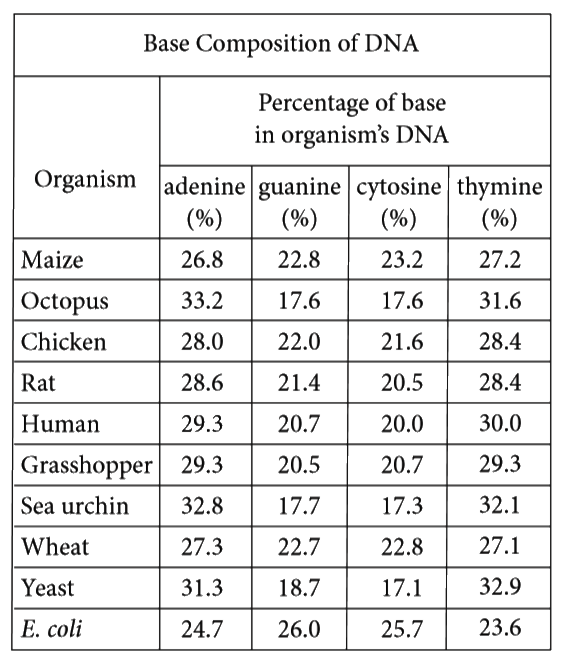
Adapted from Manju Bansal, “DNA Structure: Revisiting the
Watson-Crick Double Helix.” ©2003 by Current Science Association,
Bangalore
30. According to the table, which of the following pairs of base percentages in sea urchin DNA provides evidence in support of the answer to the previous question?A17.3% and 17.7%B17.3% and 32.1%C17.3% and 32.8%D17.7% and 32.8% - Question 2 - Select One
Passage1 Teachers have one true job: to inspire. Educate comes from the Latin word educare meaning "bring out and lead forth," therefore, it is the duty of the teacher to open the minds of students and to guide them into new places. It is not nearly as important to divulge knowledge as it is to stimulate a desire and love for the thing itself. Teaching, when done properly, allows a second chance for students to contemplate those values and beliefs that have been imparted to them. In venturing to these new places, teachers have the opportunity to unleash active and independent-thinking humans. Consider the average student, constantly told what to believe and how to act-a robotic imitator of cultural values and societal standards. Yet, the teacher has the power to make all the difference. The teacher is the opener of the dormant mind, the bringer of the epiphany, the supplier of the moment of change. A classroom that fails to challenge a student's fundamental principles and create a hunger for lifetime learning fails altogether. Whether teaching the humanities or the sciences, the educator is the one who lays out a puzzle and pilots instances of profound, sublime enlightenment. A student lucky enough to study under a true teacher is never satisfied, but instead is relentlessly looking for answers. It is through inspiration that a teacher teaches a student to think. Educating is not the business of memorization but the business of inquiry. The student-teacher dichotomy is one of reciprocated wonderment with each party undergoing continuous improvement. And an effective instructor is merely the one responsible for that curiosity in the minds of his or her students. It was Robert Frost who said, "I am not a teacher, but an awakener." Passage 2 I became a teacher because it was the noblest profession I could think of get this: I impart knowledge. I am responsible for instilling the foundation in the next generation of professionals and leaders. It all sounds very romantic, but the job comes down to an ability to simplify and explain those concepts that make up the core curriculum if I cannot communicate clearly with my students, if I cannot come to their level and make the instruction relevant and accessible, then I fail. In the words of Ralph Waldo Emerson: "The man who can make hard things easy is the educator." And that is my job. My philosophy relies on giving your children the best possible start. I am the opener of doors. I believe in providing an optimal learning environment to attack the core subjects rigorously, allowing each student to walk out feeling confident and prepared, whether it be for graduation tests, college-entrance exams. or the job market. So my skill is just this: I bridge the gap between student and textbook. As a compassionate and passionate educator, I know the competition your child faces. I am Interested in breaking down the barriers that intimidate students and providing the path that will get them better college offers, better careers, and most significantly, a better quality of life. To do this, I adopt a perspective of peak preparation at all costs. My classroom is responsible for instilling the concepts and skills that will be tested and evaluated, and it is a responsibility that I do not take lightly. It is these standards and basics-which every student of mine will come to know and understand that often determine a student’s future success. Because I take my position as educator so seriously, you can trust me to have your child ready for the next step.
which option gives the best evidence for the answer to the previous question?Alines 1-2 ("educate…forth")Blines 6-8 ("in venturing…humans")Clines 12-14 ("a classroom…altogether")Dlines 16-17 ("a student…answers") - Question 3 - Select One
Passage1 Teachers have one true job: to inspire. Educate comes from the Latin word educare meaning "bring out and lead forth," therefore, it is the duty of the teacher to open the minds of students and to guide them into new places. It is not nearly as important to divulge knowledge as it is to stimulate a desire and love for the thing itself. Teaching, when done properly, allows a second chance for students to contemplate those values and beliefs that have been imparted to them. In venturing to these new places, teachers have the opportunity to unleash active and independent-thinking humans. Consider the average student, constantly told what to believe and how to act-a robotic imitator of cultural values and societal standards. Yet, the teacher has the power to make all the difference. The teacher is the opener of the dormant mind, the bringer of the epiphany, the supplier of the moment of change. A classroom that fails to challenge a student's fundamental principles and create a hunger for lifetime learning fails altogether. Whether teaching the humanities or the sciences, the educator is the one who lays out a puzzle and pilots instances of profound, sublime enlightenment. A student lucky enough to study under a true teacher is never satisfied, but instead is relentlessly looking for answers. It is through inspiration that a teacher teaches a student to think. Educating is not the business of memorization but the business of inquiry. The student-teacher dichotomy is one of reciprocated wonderment with each party undergoing continuous improvement. And an effective instructor is merely the one responsible for that curiosity in the minds of his or her students. It was Robert Frost who said, "I am not a teacher, but an awakener." Passage 2 I became a teacher because it was the noblest profession I could think of get this: I impart knowledge. I am responsible for instilling the foundation in the next generation of professionals and leaders. It all sounds very romantic, but the job comes down to an ability to simplify and explain those concepts that make up the core curriculum if I cannot communicate clearly with my students, if I cannot come to their level and make the instruction relevant and accessible, then I fail. In the words of Ralph Waldo Emerson: "The man who can make hard things easy is the educator." And that is my job. My philosophy relies on giving your children the best possible start. I am the opener of doors. I believe in providing an optimal learning environment to attack the core subjects rigorously, allowing each student to walk out feeling confident and prepared, whether it be for graduation tests, college-entrance exams. or the job market. So my skill is just this: I bridge the gap between student and textbook. As a compassionate and passionate educator, I know the competition your child faces. I am Interested in breaking down the barriers that intimidate students and providing the path that will get them better college offers, better careers, and most significantly, a better quality of life. To do this, I adopt a perspective of peak preparation at all costs. My classroom is responsible for instilling the concepts and skills that will be tested and evaluated, and it is a responsibility that I do not take lightly. It is these standards and basics-which every student of mine will come to know and understand that often determine a student’s future success. Because I take my position as educator so seriously, you can trust me to have your child ready for the next step.
which option gives the best evidence for the answer to the previous question?ALines 24-26 ("get this…leaders")BLines 32-35 ("I believe…market")CLines 41-42 ("my classroom…lightly")DLines 42-44 ("it is …success")
A circus wishes to develop a new clown act. Fig. (1) shows a diagram of the proposed setup. A clown will be shot out of a cannot with velocity v0 at a trajectory that makes an angle θ=45∘ with the ground. At this angile, the clown will travell a maximum horizontal distance. The cannot will accelerate the clown by applying a constant force of 10,000N over a very short time of 0.24s. The height above the ground at which the clown begins his trajectory is 10m.
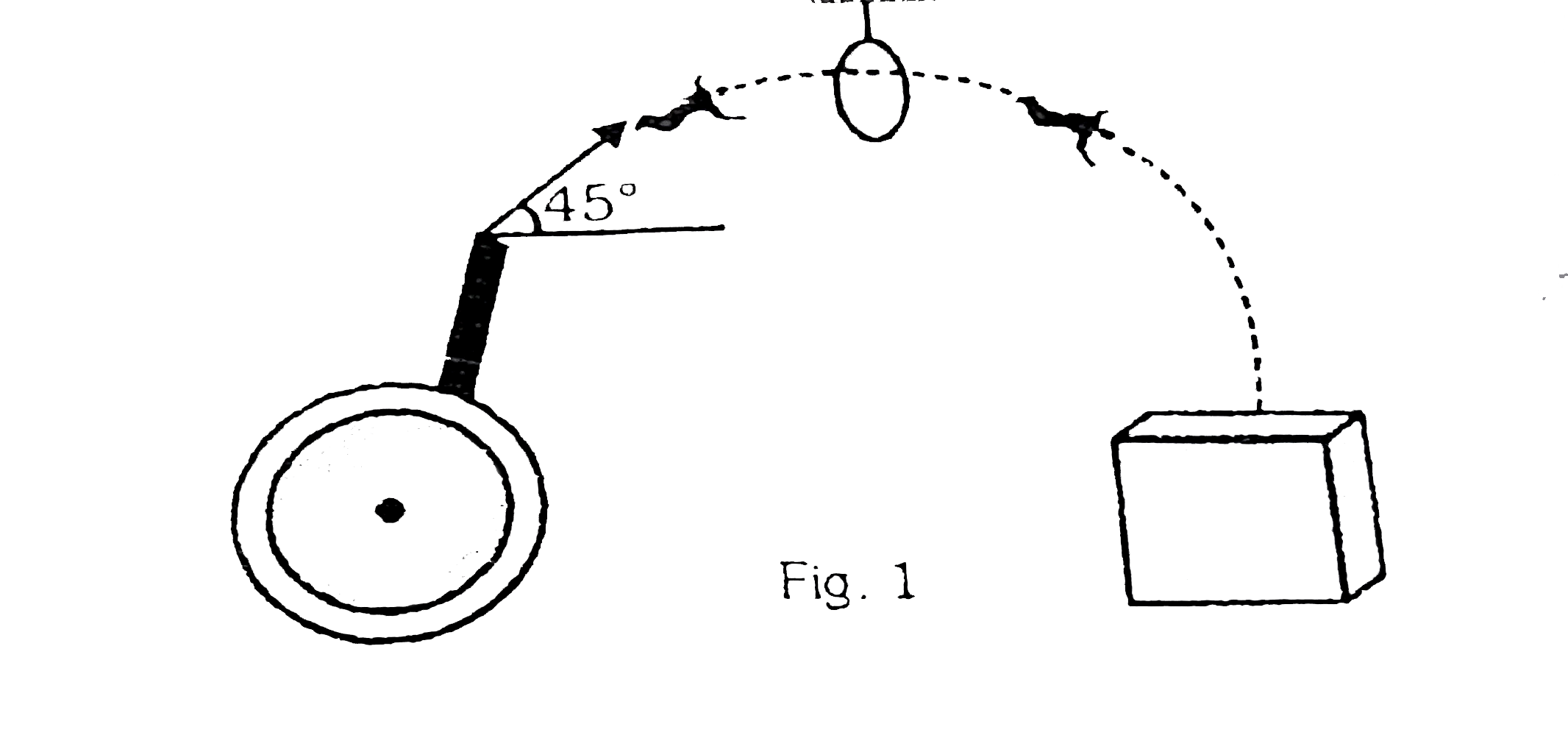
A large hoop is to be suspended from the celling by a massless cable at just the right place so that the clown will be able to dive through it when he reaches a maximum height above the ground. After passing through the hoop he will then continue on his trajectory until arriving at the safety net. Fig (2) shows a graph of the vertical component of the clown's velocity as a function of time between the cannon and the hoop. Since the velocity depends on the mass of the particular clown performing the act, the graph shows data for serveral different masses.
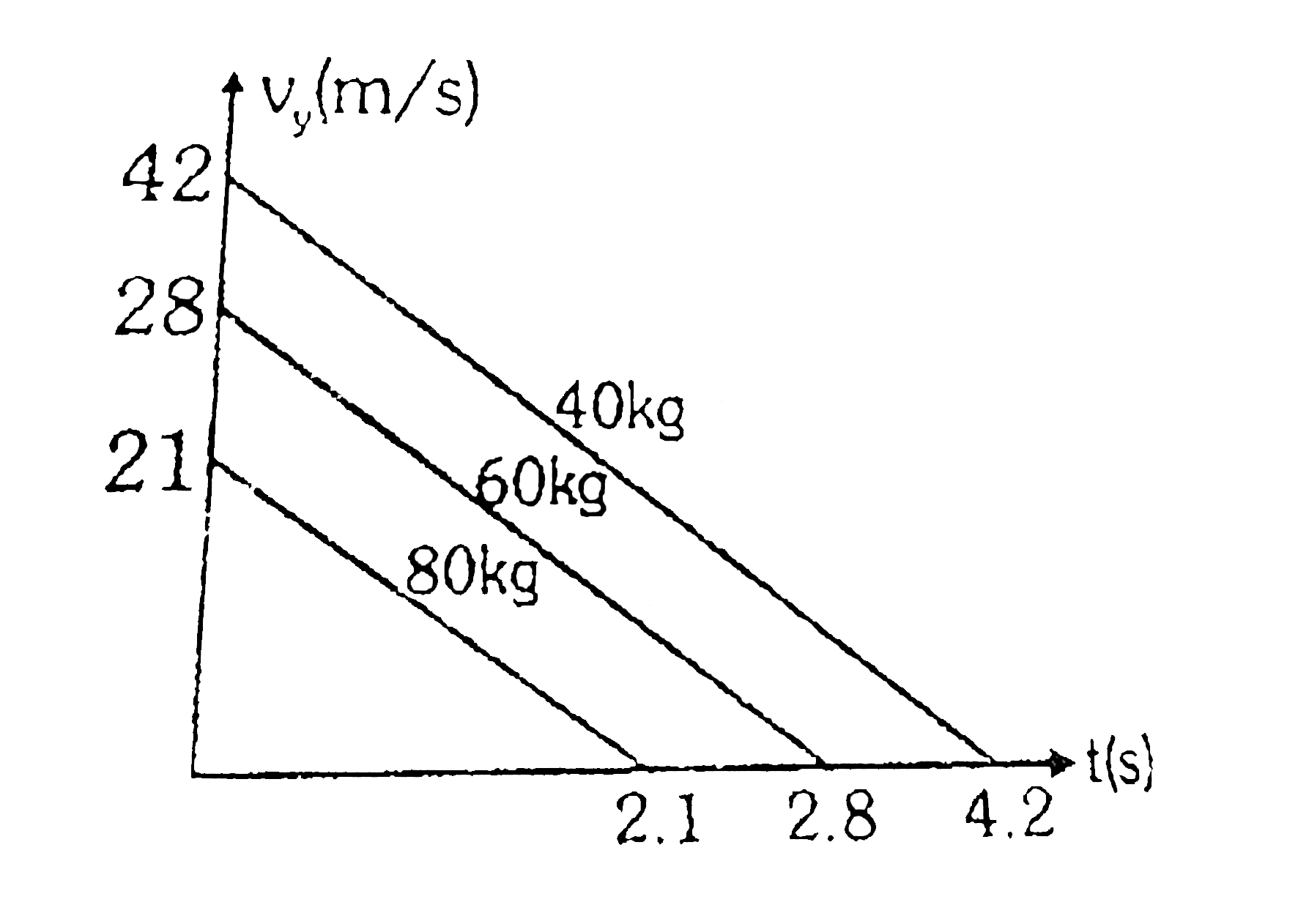
If the angle the cannot makes with the horiaontal is increased from 45∘, the hoop will have to beView SolutionA circus wishes to develop a new clown act. Fig. (1) shows a diagram of the proposed setup. A clown will be shot out of a cannot with velocity v0 at a trajectory that makes an angle θ=45∘ with the ground. At this angile, the clown will travell a maximum horizontal distance. The cannot will accelerate the clown by applying a constant force of 10,000N over a very short time of 0.24s. The height above the ground at which the clown begins his trajectory is 10m.
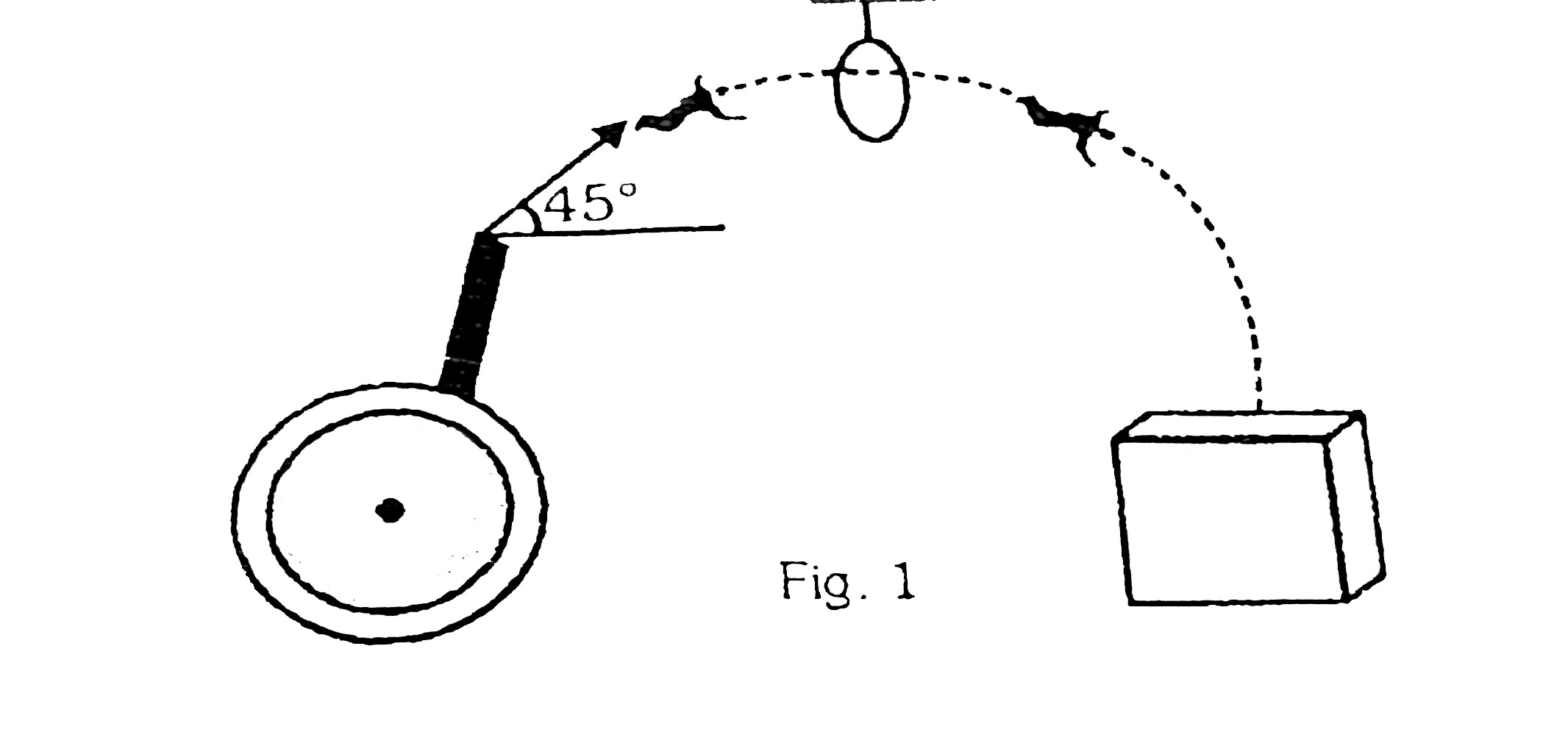
A large hoop is to be suspended from the celling by a massless cable at just the right place so that the clown will be able to dive through it when he reaches a maximum height above the ground. After passing through the hoop he will then continue on his trajectory until arriving at the safety net. Fig (2) shows a graph of the vertical component of the clown's velocity as a function of time between the cannon and the hoop. Since the velocity depends on the mass of the particular clown performing the act, the graph shows data for serveral different masses.
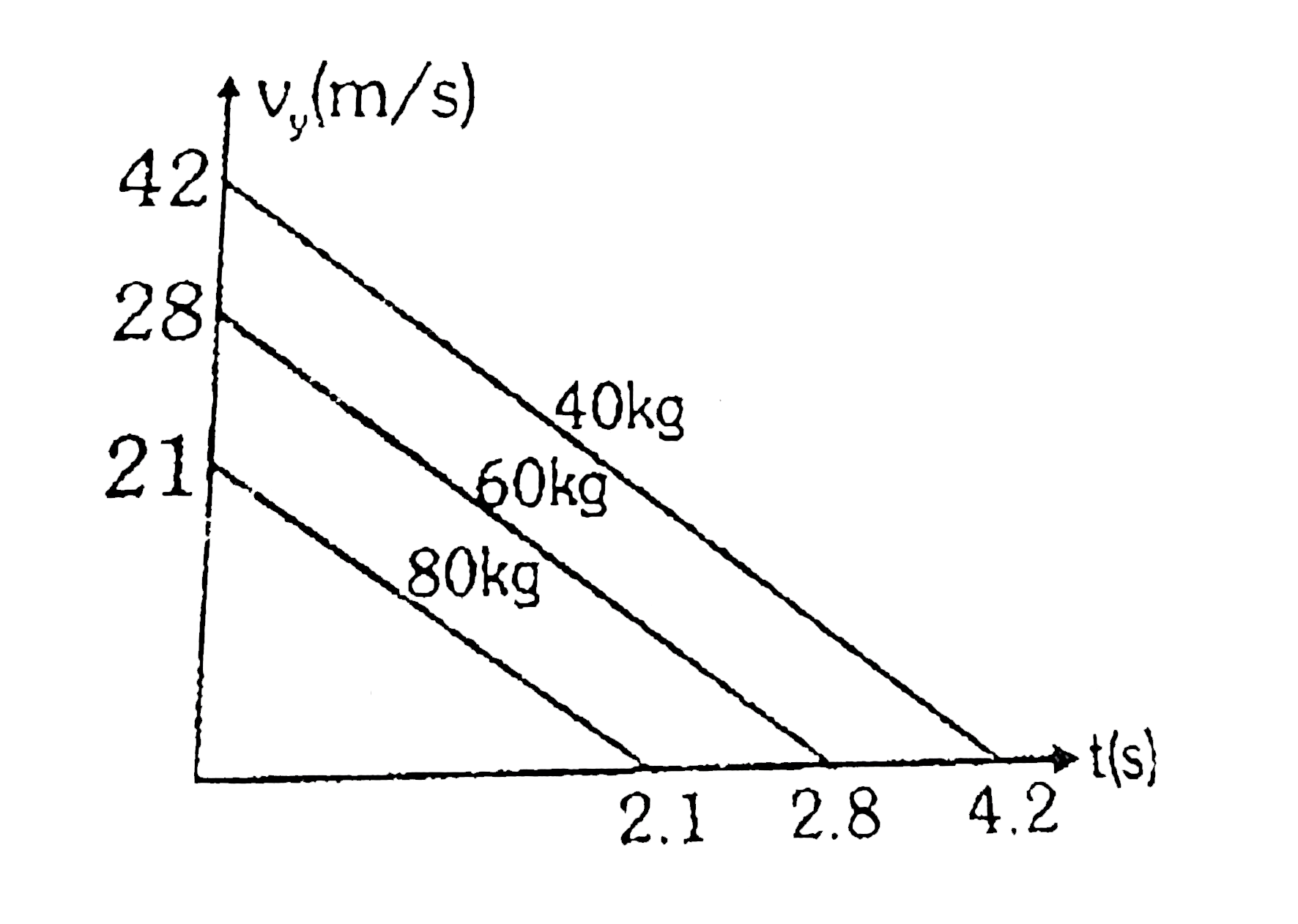
The slope of the line segments plotted in figure 2 is a figure constant. Which one of the following physical quantities does this slope represent?View SolutionA psychologist selected a random sample of 20 students. He grouped them in 10 pairs so that the students in each pair have nearly equal scores in an intelligence test. In each pair, one student was taught by method A and the other by method B and examined after the course. The marks obtained by them after the course are as follows.
PairsMethod AMethod B134382364332839434455404363050734528283993240104242 Calculate spearman's Rank correlationView SolutionEinstein in 1905 proppunded the special theory of relativity and in 1915 proposed the general theory of relativity. The special theory deals with inertial frames of reference. The general theory of relativity deals with problems in which one frame of reference. He assumed that fixed frame is accelerated w.r.t. another frame of reference of reference cannot be located. Postulated of special theory of realtivity
● The laws of physics have the same form in all inertial systems.
● The velocity light in empty space is a unicersal constant the same for all observers.
● Einstein proved the following facts based on his theory of special relativity. Let v be the velocity of the speceship w.r.t a given frame of reference. The obserations are made by an observer in that reference frame.
● All clocks on the spaceship wil go slow by a factor √1−v2/c2
● All objects on the spaceship will have contracted in length by a factor √1−v2/c2
● The mass of the spaceship increases by a factor √1−v2/c2
● Mass and energy are interconvertable E=mc2
The speed of a meterial object can never exceed the velocity of light.
● If two objects A and B are moving with velocity u and v w.r.t each other along the x-axis, the relative velocity of A w.r.t. B=u−v1−uv/v2
One cosmic ray particle appraches the earth along its axis with a velocity of 0.9c towards the north the and another one with a velocity of 0.5c towards the south pole. The relative speed of approcach of one particle w.r.t. another is-View SolutionEinstein in 1905 proppunded the special theory of relativity and in 1915 proposed the general theory of relativity. The special theory deals with inertial frames of reference. The general theory of relativity deals with problems in which one frame of reference. He assumed that fixed frame is accelerated w.r.t. another frame of reference of reference cannot be located. Postulated of special theory of realtivity
● The laws of physics have the same form in all inertial systems.
● The velocity light in empty space is a unicersal constant the same for all observers.
● Einstein proved the following facts based on his theory of special relativity. Let v be the velocity of the speceship w.r.t a given frame of reference. The obserations are made by an observer in that reference frame.
● All clocks on the spaceship wil go slow by a factor √1−v2/c2
● All objects on the spaceship will have contracted in length by a factor √1−v2/c2
● The mass of the spaceship increases by a factor √1−v2/c2
● Mass and energy are interconvertable E=mc2
The speed of a meterial object can never exceed the velocity of light.
● If two objects A and B are moving with velocity u and v w.r.t each other along the x-axis, the relative velocity of A w.r.t. B=u−v1−uv/v2
The momentum of an electron moving with a speed 0.6c (Rest mass of electron is 9.1×10−31kg)View Solution
